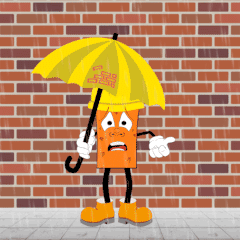Introduction
Damp issues in homes can be a persistent headache for homeowners. From unsightly stains on walls to the musty smell that refuses to fade, damp problems not only affect the aesthetics of your home but also compromise its structural integrity and pose health risks. However, there’s a solution that often goes overlooked: brick repointing. In this comprehensive guide, we’ll delve into how brick repointing can be a game-changer in resolving damp issues, safeguarding your home, and restoring peace of mind.
Understanding Dampness: Before we explore the role of brick repointing in damp issue resolution, it’s crucial to grasp the root causes of dampness in homes. Dampness typically arises from various sources, including leaks in plumbing, condensation, and, significantly, water penetration through deteriorating mortar joints in brickwork. When mortar joints degrade over time due to weathering, they become porous, allowing water to seep into the walls. This moisture accumulation not only weakens the structural integrity of the building but also creates an ideal environment for mould and mildew growth.
The Brick Repointing Solution
Brick repointing emerges as a highly effective solution to combat dampness caused by deteriorating mortar joints. But what exactly is brick repointing? In simple terms, it involves the meticulous process of removing deteriorated mortar from between bricks and replacing it with fresh mortar. By restoring the integrity of mortar joints, brick repointing not only enhances the aesthetics of the exterior but also acts as a barrier against water infiltration.
How Brick Repointing Mitigates Damp Issues:
- Improved Waterproofing: The primary function of mortar joints is to provide a weatherproof seal between bricks. When these joints degrade, they lose their ability to repel water effectively, allowing moisture to penetrate the walls. Through brick repointing, deteriorated mortar is replaced with a high-quality, waterproof mortar mix, effectively sealing off entry points for water. This renewed waterproofing prevents moisture from infiltrating the walls, thereby addressing the root cause of damp issues.
- Enhanced Structural Integrity: Dampness not only compromises the aesthetic appeal of your home but also weakens its structural stability. Moisture-laden walls are prone to deterioration, including crumbling bricks and weakened foundations. By undertaking brick repointing, homeowners can reinforce the structural integrity of their homes. Fresh mortar provides crucial support to the bricks, preventing water-induced damage and ensuring the longevity of the structure.
- Prevention of Mold and Mildew: Mold and mildew thrive in damp, humid environments, posing significant health hazards to occupants. Damp walls resulting from deteriorating mortar joints create an ideal breeding ground for these harmful microorganisms. Brick repointing disrupts this cycle by eliminating the moisture ingress points, thereby depriving mould and mildew of the conditions they need to proliferate. By addressing dampness at its source, brick repointing helps maintain a healthy indoor environment for you and your family.
The Brick Repointing Process
Now that we’ve established the importance of brick repointing in damp issue resolution, let’s delve into the process itself. Brick repointing is a meticulous and labour-intensive task that requires precision and expertise. Here’s an overview of the typical brick repointing process:
- Assessment: A thorough inspection of the exterior walls is conducted to assess the extent of mortar deterioration and identify areas prone to water penetration.
- Preparation: The area to be repointed is prepared by removing the deteriorated mortar using specialized tools such as chisels and grinders. Care is taken to avoid damaging the surrounding bricks.
- Cleaning: Once the old mortar is removed, the exposed brickwork is cleaned to remove any debris, dust, or contaminants that could interfere with adhesion.
- Mixing Mortar: A suitable mortar mix is prepared, taking into account factors such as the composition of the existing mortar, the environmental conditions, and the desired aesthetic outcome.
- Repointing: Fresh mortar is carefully applied to the cleaned joints using a pointing trowel, ensuring full coverage and proper compaction. The mortar is tooled to match the appearance of the surrounding joints, seamlessly blending with the existing brickwork.
- Curing: The repointed area is allowed to cure properly, typically for several days, to ensure optimal strength and durability.
Conclusion
Brick repointing is not just a cosmetic upgrade; it’s a proactive measure to safeguard your home against damp issues and their associated consequences. By addressing deteriorating mortar joints, brick repointing reinforces the structural integrity of your home, enhances its waterproofing capabilities, and creates a healthier living environment for you and your family. So, if dampness is casting a shadow over your home, consider investing in brick repointing – your home’s first line of defence against moisture intrusion.

